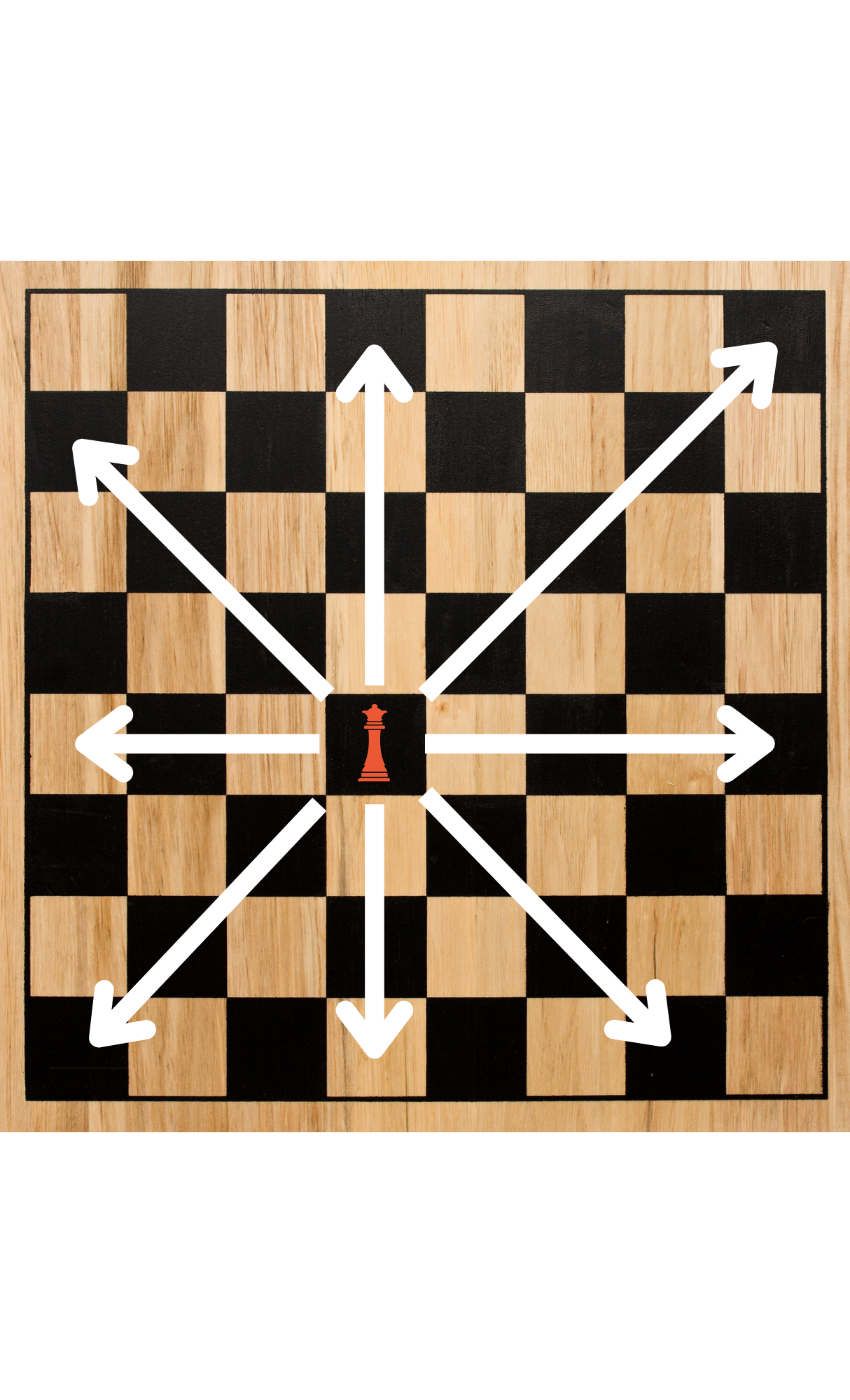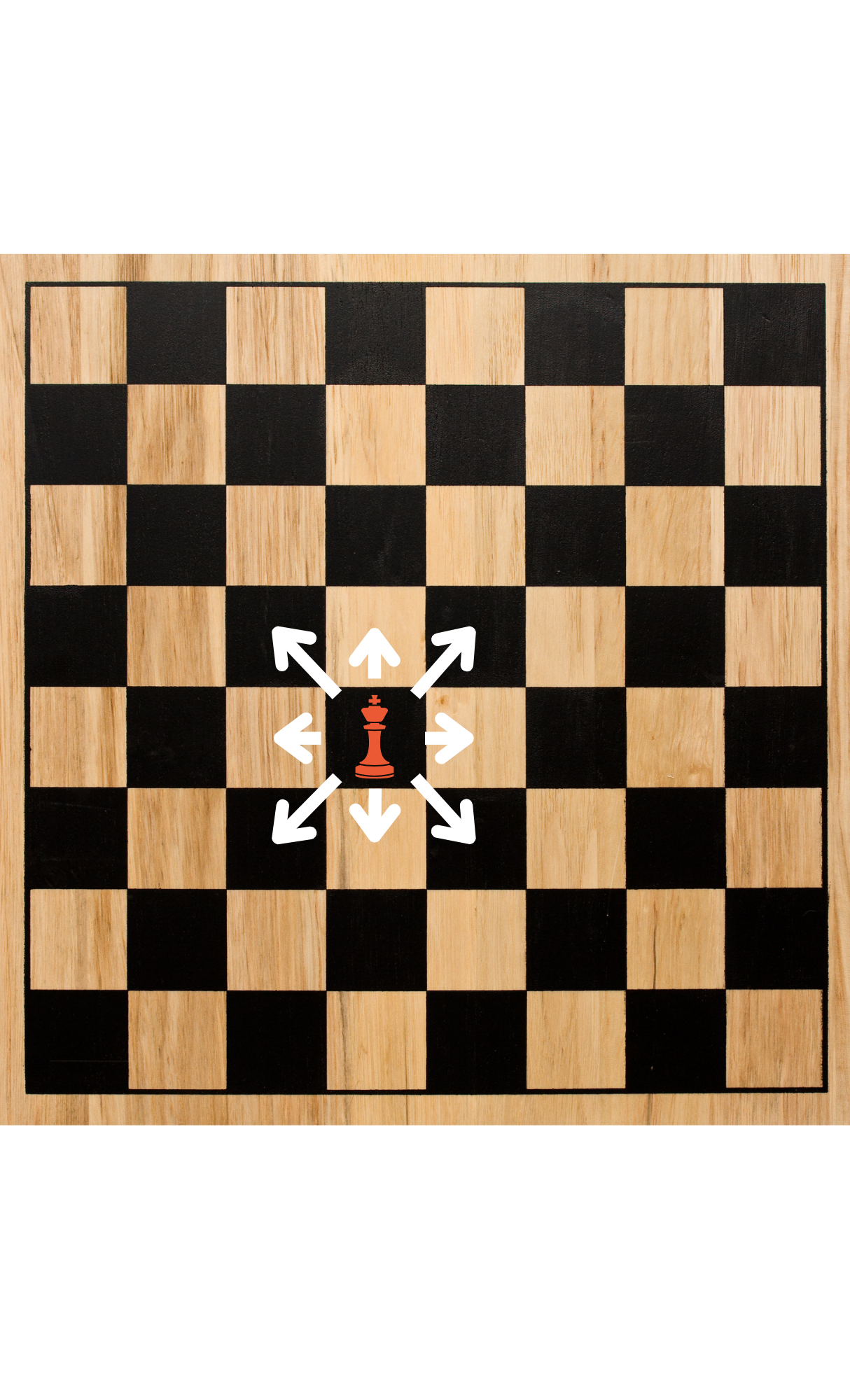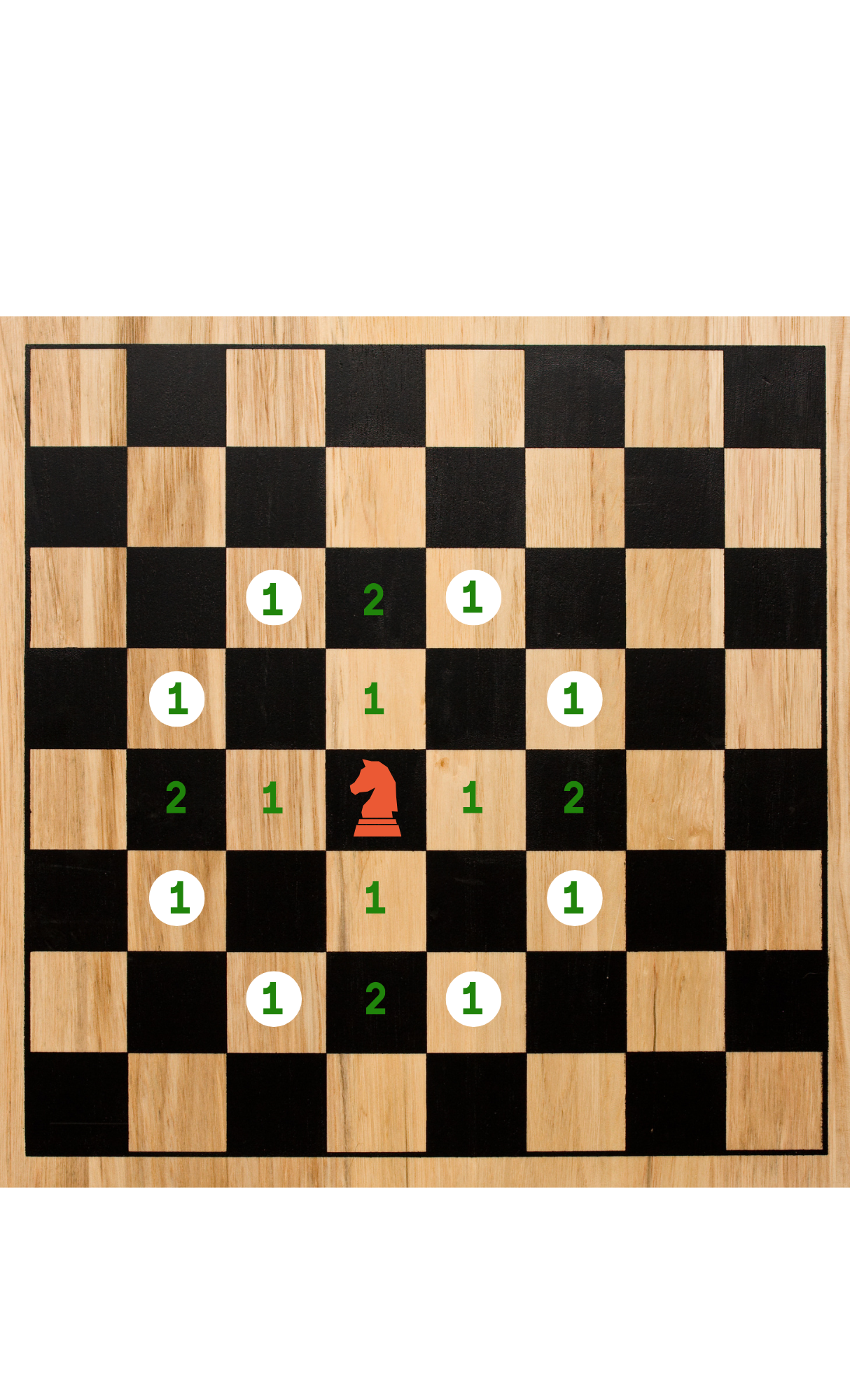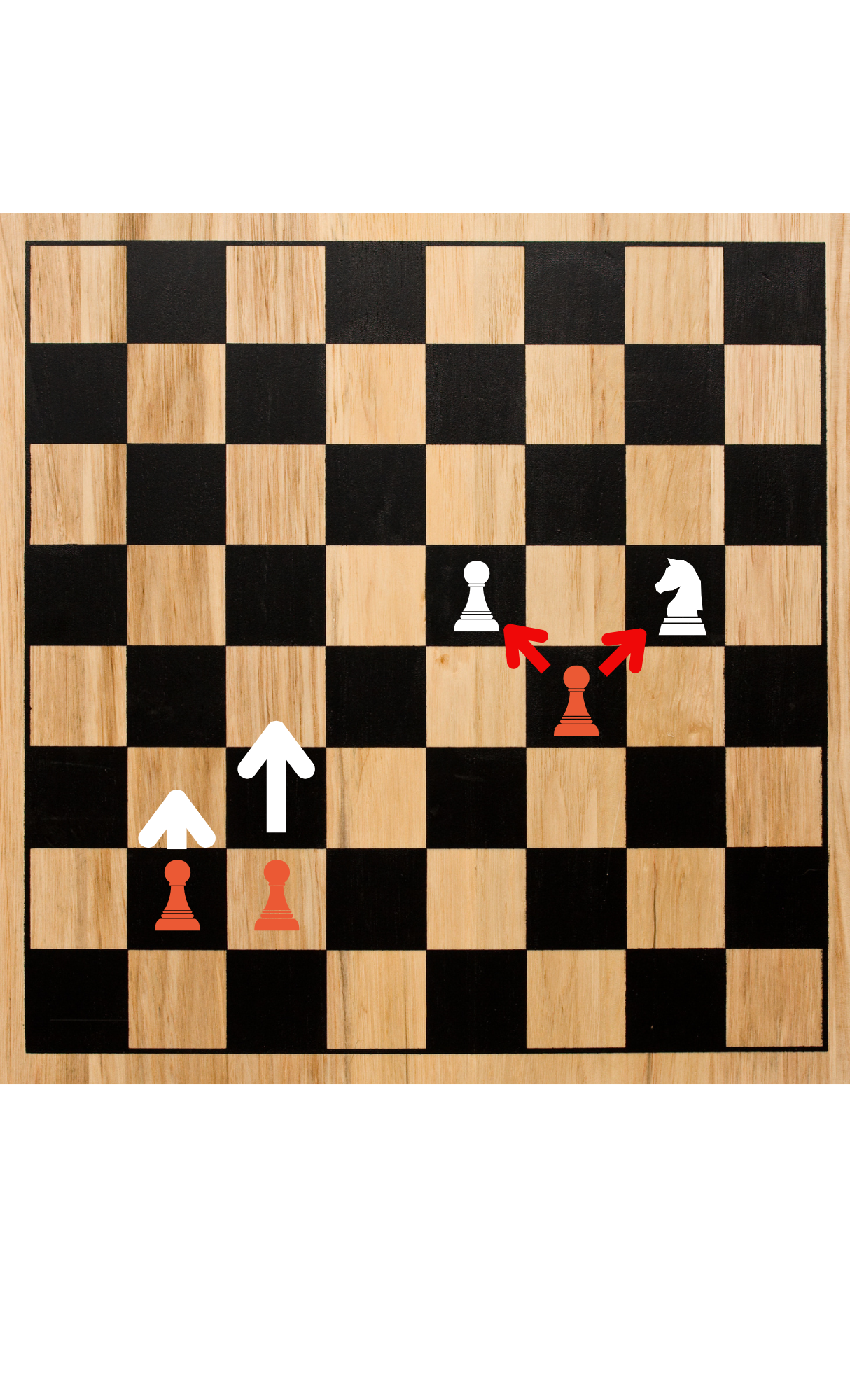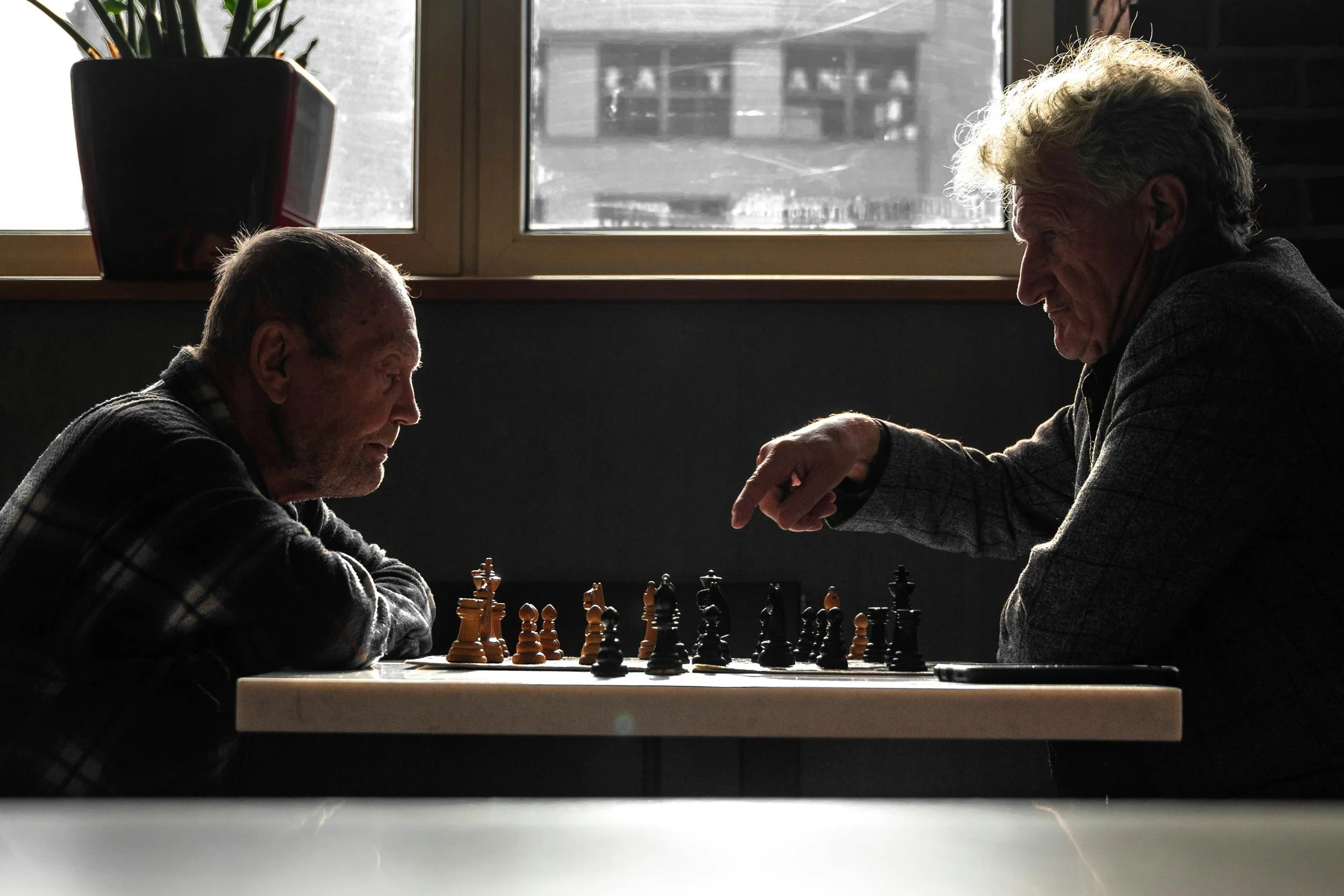Know Your Chess Pieces
Make powerful attacks by learning how to move chess pieces and where each thrives.
What We’ll Cover
The name of each piece
How each moves and attacks
Making good threats
Your most important pieces
Why it Matters
Knowing where your pieces thrive helps you position them on their strongest squares, giving you the advantage.
I don’t know about you, but I like winning my chess games.
The Pieces
The Rook
Rooks are long-range pieces that can move forward, backward, left, and right, as far as you want, so long as not blocked by your pieces or your opponent’s- they can’t jump over any pieces.
Capture
You start the game with two Rooks and their range of attack is the same as its movement. This means any of your opponent’s pieces that are in line with your rook can be captured.
Where to Put Them
Keep Rooks on open lines attacking down the board towards your opponent’s pieces, preferably near their King.
The Bishop
Bishops are long-range pieces that attack on their diagonals. They can move forward, backward, left, and right along their slants, so long as they are not blocked by any pieces (yours or your opponents). This means they can’t jump over pieces.
Capture
You start games with two bishops. Their range of attack is the same as their movement, so opponent pieces in line with them can be captured.
Where to Put Them
Bishops thrive in wide open spaces. Keep them on open slants attacking towards your opponent’s King.
The Queen
The Queen is a strong long-range piece and moves like both a Bishop and Rook combined. Because of this, they can move forward, backward, left, right, and along their diagonals, so long as not blocked- they can’t jump over pieces.
Capture
You begin the game with 1 Queen and it attacks in the same directions it can move. If your opponent’s pieces are in line with your Queen, they’re able to be captured.
Where to Put Your Queen
Queens dominate in open and tight spaces, but work best when another piece is supporting them. Defend your Queen with another one of your pieces and line it up with the opposing King to deliver a game-ending attack.
The King
Your King is a short-range piece that’s able to move one square in any direction, so long as not blocked by its own color pieces.
Capture
Its attack range is the same. Any enemy pieces surrounding the King are able to be attacked.
Limitations
Kings are not able to step into any squares that enemy pieces attack. Because of this, Kings can never be next to each other because each King’s movement and attack range is 1 square surrounding them.
Kings Are Never Captured
Checkmate ends the game. If the king is being threatened by another piece- called “check”- and has no way to get out of “check”, then the position is “checkmate” and the game ends immediately. Kings are never captured or taken off the board.
The Knight
Knights are mid-range pieces that move “over two, over one”. Starting from a vertical or horizontal square around the Knight, count two squares up, down, left, or right. Then adjacent one square.
The knight is the only piece that can jump over other pieces. They’re able to jump over both your pieces and your opponent’s.
Capture
You begin the game with two Knights and they capture only on the square they land on, not the pieces they jump over.
Where to Put Knights
Knights do very well in cramped spaces. If there are a lot of pawns and pieces jumbled up on the board, you’ll want to protect your Knights as they’re best able to navigate the mess.
The Pawn
Pawns are short-range pieces that each have the option to move one square or two squares on their first move.
After a pawn’s first move, it can only move forward one square at a time.
Capture
You start the game with 8 pawns and they capture differently than they move. They attack one square forward diagonally in either direction. If your opponent’s pieces are on these squares then can be captured, no matter how powerful they are.
That means a lowly pawn is able to capture a powerful Queen.
Where Pawns Thrive
Pawns do well when they support each other (called pawn chains). Because they attack one square forward diagonally in both directions, you can line up pawns so they defend one another, making a wall that can’t be broken easily.
How to Make Strong Threats
“The measure of a man is what he does with power.”
- Plato
Beginner players seem to think every capture they can make is a threat.
This isn’t exactly true.
If enemy pieces are defended, then capturing them only invites a recapture of your piece. Before going capture-crazy, consider whether the action is worth doing. Not everything we can do we should do.
A good rule is to think of 3 options when it’s your turn, then pick the best one.
Your Pieces Work Together
The same rules of defense applies to your own pieces.
If you place pieces where your other pieces attack, they’re defended. You can use defended pieces to advance your army and launch strong attacks towards enemy lines.
Your Most Important Pieces
Your King
Because checkmate ends the game, your King is considered priceless in chess. Though not very strong, it’s your most important piece.
Your Queen
Nothing else on the board can compete with the attacking power of the Queen, making it your most powerful piece.
Keep both of these safe if you can! Notice where your opponent has pieces in line with your Queen and King and keep an eye out for attacks.
Action Step
Make 10 Moves
Get an online or physical chess board. Then put one piece in the center. From there make 10 moves in a row with that piece to practice its movement. Do the same with each piece.
This may sound silly, but this is the fastest way to solidify the movements in your mind.
You can also manually make captures with each piece to get familiar with the captures. This will help you identify options in your real games.
Wrap Up
You have the tools now to move pieces to their strongest squares! Remember, your pieces can defend each other and attack together to make strong attacks. These are called “combinations”.
If you want a Free Guide to remember how to move the pieces, you can download that below.
Happy playing.




